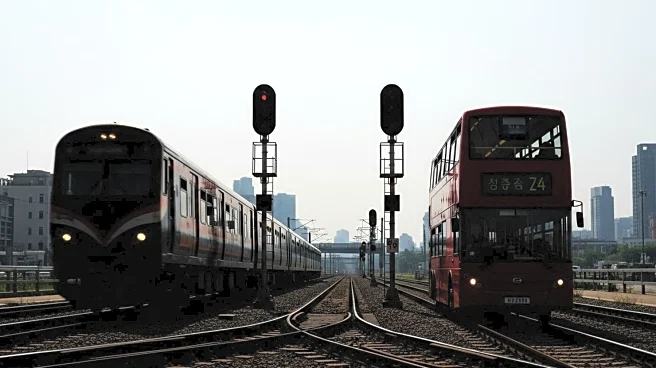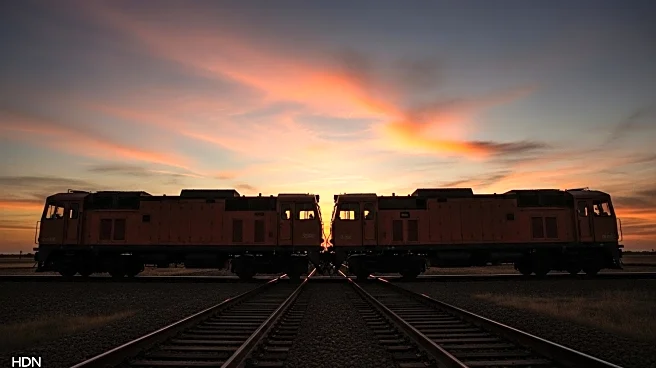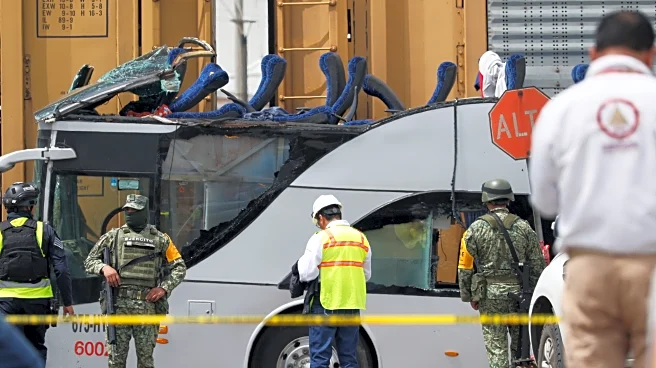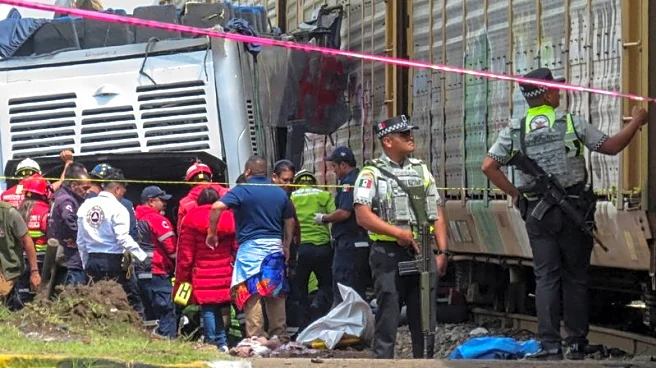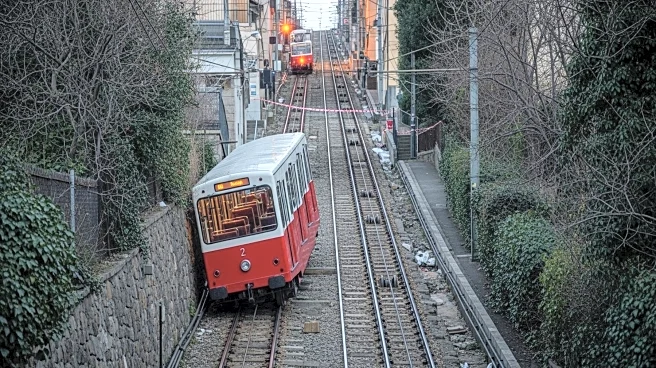What's Happening?
A tragic accident occurred in central Mexico when a double-decker passenger bus was struck by a train, resulting in the deaths of at least eight individuals and injuries to 45 others. The incident took place on the Atlacomulco-Maravatio federal highway in the Atlacomulco municipality, State of Mexico. The bus, which had departed from San Felipe del Progreso en route to Mexico City, was hit as it slowly crossed the railway tracks. Emergency services responded promptly, transferring the injured to a hospital and closing the highway in both directions to facilitate rescue and forensic operations.
Why It's Important?
This accident highlights significant safety concerns regarding transportation infrastructure and the coordination between road and rail systems in Mexico. The loss of life and numerous injuries underscore the need for improved safety measures and protocols to prevent such incidents. The event may prompt Mexican authorities to review and enhance safety regulations, potentially affecting public policy and transportation industry standards. The tragedy also impacts the families of the victims and the broader community, raising questions about accountability and the adequacy of existing safety measures.
What's Next?
In the aftermath of the collision, Mexican authorities are likely to conduct a thorough investigation to determine the cause and identify any lapses in safety protocols. This could lead to policy changes or infrastructure improvements aimed at preventing future accidents. Stakeholders, including government officials and transportation companies, may face pressure to implement stricter safety measures and improve coordination between road and rail systems. Public demand for accountability and enhanced safety could influence legislative actions and industry practices.
Beyond the Headlines
The incident may also spark discussions on the ethical responsibilities of transportation companies and government agencies in ensuring passenger safety. Long-term implications could include shifts in public perception of transportation safety and increased advocacy for regulatory reforms. The tragedy serves as a reminder of the potential risks associated with transportation systems and the importance of continuous improvement in safety standards.
